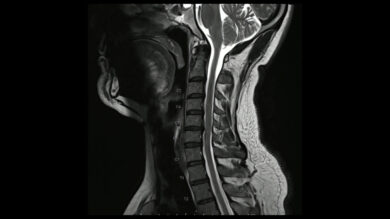How Often Should I Get a Chiropractic Adjustment?

Although many patients experience improvement after 1 or 2 chiropractic sessions, 4 to 12 sessions are common among most chiropractors. These sessions are typically spread out over 2 to 4 weeks. This number of sessions allows the chiropractor to ensure that the patient’s body is healing correctly and allows the patient to experience the full range of benefits that come with chiropractic adjustments.
After care is established, patients may choose to receive treatment once a week or even every other month. Initial care may be more frequent as the body begins to recognize the process of healing.
When personalized care is given to help your body to recover, the better your body will adapt and recover. Pain sufferers may find great appreciation in combined care plans that some facilities offer. Comprehensive plans may include chiropractic treatments, rehabilitative therapy, spinal decompression, and chiropractic massage therapy.
How Many Chiropractic Visits Are Necessary?
How many chiropractic visits are necessary depends entirely on the type of injury you’ve suffered or the location and severity of the pain. It also depends on your overall health, activity level, and lifestyle. For minor issues, most patients experience relief in 4 to 8 visits. For more serious issues, the number of visits can vary widely. From 8 up to 36 visits are common over a matter of weeks or months. There are several chiropractic adjustment techniques that may also determine how many visits are required.
Can You Go to the Chiropractor Too Much?
Since chiropractic care is incredibly safe, it’s not easily quantifiable like taking too many prescription drugs or having too much surgery. Chiropractors are highly trained doctors who will make their recommendations based on your individual issues, your needs, and what he or she thinks it will take to relieve your pain and return you to normal (or better than normal). What’s right for you may be considered overkill for another patient.
For all these reasons, it’s rare that you’ll be visiting the chiropractor too much. This is why it’s best to communicate clearly with your chiropractor so you can both find the right balance in your chiropractic visits.
How Often to Go to a Chiropractor for Maintenance
Patients who are participating in chiropractic maintenance for overall health, wellness, flexibility, and well-being often go a month between visits. It’s normal to have 1 visit every 1 to 3 months. However, maintenance visits can also vary. It comes down to what the individual patient wants and what the chiropractor recommends. Some chiropractic maintenance schedules call for 2 or 3 visits per month.
Do I Need to Go to The Chiropractor 3 Times a Week?
It’s common for chiropractic patients to receive care 2 or 3 times per week for the first 1 to 4 weeks. Generally, 3 visits per week are performed until the patient experiences a lessening of pain and other symptoms. At which point, the schedule typically reduces to 1 or 2 times a week until the symptoms disappear completely.
How you will feel after an adjustment may make you want to return every day! It feels so good, but it is important to listen to the advice of your chiropractor as to frequency.
How Many Chiropractor Visits for Lower Back Pain?
Lower back pain is one of the most common causes of debilitating pain all over the world. It can have many causes that can be addressed by a chiropractor. The number of chiropractor visits needed for lower back pain usually falls within the 6 to 12 range. These visits are usually spread over 2 to 4 weeks. These sessions generally last an hour and typically involve spinal adjustments and other modalities to relieve pain, such as chiropractic massage or electrical stimulation. They may also recommend exercise at home when the pain reduces adequately.
How Many Chiropractor Visits for Herniated Disc?
Herniated or bulging discs are common issues treated by chiropractors. Treatments typically involve spinal manipulation and may include therapeutic exercises and other chiropractic modalities. Treating a herniated disc generally takes 2 to 4 sessions over the course of 1 to 3 weeks.
How Many Chiropractor Visits for Sciatica?
Sciatica is a very common condition characterized by pain in the glute and down the back of the leg. Chiropractic care has proven effective for treating sciatica and should be tried before surgery for most patients. The number of chiropractor visits for sciatica ranges between 8 and 16, with patients seeing the relief in as little as 3 to 5 visits. 3 1-hour sessions a week is common for sciatica and they are typically continued until the pain and discomfort are completely gone.
How Many Chiropractor Visits for Whiplash?
Whiplash is a common type of strain to neck muscles due to a car accident. Depending on the severity of the whiplash, most chiropractic patients experience relief within 3 or 4 sessions. It’s common for patients to continue seeing the chiropractor until the pain is gone and the normal range of motion returns. This can take anywhere from 4 to 16 sessions over a period of 2 to 8 weeks.
How Many Chiropractor Visits for Frozen Shoulder?
A frozen shoulder can make everyday actions impossible with the affected arm. Although not the most common issue chiropractors address, chiropractic care has been shown effective at treating this fairly common issue. The typical number of sessions ranges from 5 to 10 over a period of two months.
How Many Chiropractor Visits for Migraine Headaches?
Several types of migraines and other headaches are treatable by a doctor of chiropractic. For migraines, the common number of treatments usually falls between 10 and 16. Typically these treatment sessions are performed over the course of 4 to 8 weeks for maximum effectiveness.
Benefits of Regular Chiropractic Adjustments
Deterioration of the spine is something that happens naturally as we age. It will often occur more rapidly due to injury or as a result of repetitive actions. Stress on the spinal vertebrae will also be a factor that may increase the rate of deterioration.
Regular chiropractic adjustments work to minimize the effects of stress and motion on the body. The goal of chiropractic care is to provide patients with a safe and effective method to regain and retain a healthy spine. A spine that is flexible and ready to respond to the duties of life – without pain signals flaring.
Even when symptoms are not prominent, regular chiropractic care helps to prevent pain and manage long-term spinal health. Clients may opt to simply have fewer chiropractic adjustments once the pain is no longer present. Patients may wish to discuss care plans that allow for fewer treatments once the vertebrae are in healthy form again.
Same-Day Chiropractic Adjustments Available
We offer a Same-Day Promise, meaning you’ll get in to see a chiropractor on the same day you call, provided you call before noon. Call us at (907) 346-5255 to receive the full benefits of Better Health Chiropractic Anchorage’s comprehensive chiropractic care.
The Time Factor: I Don’t Want to Rush, But I Have a Life
It will ultimately be up to the team of the patient, chiropractor, and any other care providers to decide together what may be the best number of adjustments. Care of the nervous system is not something to take lightly. Patients will want to ensure that healing is maximized and that long-term health is maintained.
Significant results are most often noticed after two to three chiropractic visits. One to four weeks is a fair time to consider for a great percentage of the pain to decrease. Be sure to speak with your provider regarding how treatments are going. Regular care cycles will often be more assessable after this initial recovery phase.
Patients with more intense care needs may take longer and need more intensive care from the onset. A multidisciplinary approach will be considered if a patient’s spinal health calls for a greater level of care. Massage therapy, physical rehabilitation therapy, and spinal decompression may be included when necessary.
Established chiropractic care centers may choose to consider the time schedules of patients. Efficient appointments are something that clients may appreciate when trying to fit adjustments into their schedules.
So, What Is a Chiropractic Adjustment?
Misalignments in the vertebrae can benefit greatly from direct care to the spine. A chiropractic adjustment resets these misalignments through spinal manipulation and techniques specific to a patient’s condition. These partial dislocations in the vertebrae are also known as subluxations.
Trained, gentle force to the partially dislocated location works to bring the vertebrae back into proper positioning, relieving pressure in the spine and restoring signals in the central nervous system. This is a chiropractic adjustment.
Primary goals of chiropractic adjustment include:
-
-
-
- Direct the body to heal itself
- Restoring proper nerve impulse
- Restore nutrient and water transmission
- Decrease or eliminate pain
- Promote wellness throughout the body
- Release toxins from the body
-
-
A chiropractic adjustment is a safe and painless process that brings restoration to the local nerves. The central nervous system works as an alert system in the body. Pain signals tell the brain to alert the person that something is not right and needs attention in the intricate and hidden parts of the body.
If you experience hip pain after an adjustment, be sure to speak to your chiropractor as soon as possible.
Pain signals are not pleasant for sufferers, but they can help us recognize the following conditions:
- Arthritis
- Misalignments in the vertebrae
- Miscommunications in the nervous system
- Scoliosis
- Stenosis
- Whiplash
- Dozens more
Goals include decreasing pain and increasing mobility for patients as efficiently as possible through spinal manipulation. How often chiropractic adjustments are needed will vary based on the severity and exact nature of a patient’s condition. Multiple conditions are sometimes present and will also need to be considered.
Should I Get a Chiropractic Neck Adjustment?
Will the stress of such a thing cause you to tense up and risk losing the benefits of the treatment? Can you stay relaxed and remember to breathe? Legit and reliable chiropractic care providers will offer multiple ways in which to direct healing in the cervical spine (neck). Be honest with your provider. If the ‘neck crack’ is not your thing, request a different type of treatment.
Expect him or her to be honest with you in return. Do not be surprised if your chiropractic provider tells you that other methods will be utilized. Trustworthy providers will know if chiropractic neck adjustment is a good choice for your specific health needs. Chiropractic massage therapy, rehabilitation therapy, other chiropractic methods may be preferred in some cases.
What Should I Consider with the Cost of Chiropractic Adjustments?
Chiropractic care is significantly less than the cost of surgery – and eliminates the need for recovery. Some would say that It is difficult to put a price tag on health. Yet, the cost of care is generally better managed when it actually works! Specific chiropractic costs will vary based on location and insurance considerations.
Established chiropractic providers may offer care payment plans. Facilities may also be willing to establish a care plan that fits a patient’s budget needs. Clients paying cash should ask about rates to reflect this payment method. Insurance companies will usually cover chiropractic care because they desire to minimize costs by avoiding more costly procedures.
What Chiropractic Adjustment Benefits Might I Expect?
It is not at all uncommon for patients to experience an immediate decrease in pain aftercare. Patients choosing to receive care in the absence of pain symptoms can maximize the body’s ability to continue healing. This also helps to slow spinal degeneration over time.
Pain sufferers receiving chiropractic adjustment can look forward to the following:
- Increase mobility
- Reduce muscle spasms
- Improve posture (helping to reduce re-injury)
- Impede arthritic inflammation
- Increased spinal health
- Wellness in the body that originates from the brain and spine’s ability to communicate properly throughout the body as a unit
- Pain Relief – often experienced immediately aftercare
The exact manner in which these benefits will present themselves for patients depends on the severity of each initial pain condition. How long benefits will be experienced varies widely based on the amount of care received and the condition of the musculoskeletal and neuromuscular systems of the patient. Some clients will find great benefit in regular, possibly less frequent, treatments once care is established.
What Chiropractic Adjustment Side Effects Might Patients Experience?
Clients will often ask, “Will I feel pain/soreness after a chiropractic adjustment?” It is good for patients to be aware of what is normal and what may be experienced after a chiropractic adjustment. Be sure to stay in complete communication with your chiropractic provider regarding your experience.
Not all patients will encounter these side effects. Patients may experience one or more of the following after a chiropractic adjustment.
- Mild discomfort may be experienced after an adjustment – usually less than 24-hour hours.
- Tiredness may be experienced as the central nervous system responds to treatment.
- Minimal soreness is common after a chiropractic adjustment. In the event that soreness is more than desirable, physician and patient can work together to alter treatments for maximizing individual benefits.
- Headaches are possible after an adjustment. This is usually a good indication of where future alignment work is needed for patients.
- Severe pain is not common but may be present for some patients working to heal from serious spinal conditions. Treatments are designed to decrease pain and this will often take multiple treatments for severe conditions.
- Adjustments are designed to help the body release unwanted toxins. This can cause nausea after adjustments. Drink plenty of water to help the body flush these away!
- Dizziness after an adjustment is possible but more likely for patients that may have head or neck trauma from which to recover. Dizziness may be minimal and not last very long. However, this is a good thing to communicate to your chiropractor – it can be a sign that realignment is still underway in the vertebrae.
- Lumbar adjustments can be painful during the process of healing. However, if severe lower back pain is experienced after an adjustment, contact your chiropractor immediately for instructions for care.
- Vertigo is not common after a chiropractic adjustment, but it does occur for some patients. Inquire with your provider as desired if you experience vertigo after an adjustment.
- Abdominal pain after a chiropractic adjustment is most often the result of irritable bowel syndrome. As the spine begins to retake its intended placement in the body, underlying causes may begin to show their presence in a more prominent manner. Stay in communication with your provider regarding conditions that will need proper care as your body is directed towards healing.
Toxins Released after a Chiropractic Adjustment? Is This a Bad Thing?
One of the goals of chiropractic adjustment is to free the body of unwanted toxins – especially in painful areas. So, yes, when toxins are present in the body, they can be released as a result of chiropractic adjustments. But do you really want unnecessary toxins in your body anyway?
Some people appreciate receiving chiropractic massage therapy to help toxins make their way from the body after an adjustment. If this is an option, enjoy it for an added benefit to your health! Drinking water also helps the body to process and get rid of toxins released during an adjustment.
Scheduling Concerns: A 10-Minute Promise
Clients may avoid chiropractic adjustments because they feel that appointments may be inconvenient in the midst of regular life. Work, family, and other endeavors may make it difficult to see how regular visits are attainable. Health considerations may increase for patients as the need for care increases. Use caution when deciding to hold off on spinal care. Waiting can make the need for care more prominent as time progresses. At Better Health Chiropractic & Physical Rehab, we offer a 10-Minute promise for our chiropractic adjustments.
Adjustments In Real-Time: Get the Care You Need
Be sure to work with a chiropractic provider who will be honest with you in determining what your best number will be? As healing begins, you may require fewer and fewer treatments over time. Ensure that your provider will be willing to reassess the number of treatments that you receive based on what is actually beneficial for you now – not several weeks ago.
Look for care that will be accessible, timely, and appropriate for you and your schedule. Alaska residents make frequent appointments with us because they trust the hundreds of 5-Star reviews we received aside from our 10-Minute Promise ensuring that care is provided in a consistently timely manner. This is most beneficial if a patient chooses to receive multiple adjustments within a short amount of time. Care can often be maximized in this manner. The spine is not given time to begin returning to the former positioning. Healing continues to happen in the vertebrae and pain continues to decrease.
Patients looking for chiropractic care in Alaska are encouraged to contact Better Health Chiropractic & Physical Rehab. 1.877.346.5255 is the number to call to schedule your first visit.

About the Author
Dr. Brent Wells, D.C.
Dr. Brent Wells has been a trusted chiropractor since moving his family from Oregon to Alaska back in 1998 and founded Better Health Chiropractic & Physical Rehab – B.S. from Univ. of Nevada, Doctorate from Western States Chiropractic College, volunteer for Reflex Sympathetic Dystrophy Foundation, and member of the American Chiropractic Association. As a chiropractor his focus is on family, including his 3 children and wife of 20+ years, his clinics, and ongoing education.
Learn more about chiropractic!
Why Should I See a Chiropractor?
What Does Chiropractic for Back Pain Involve?
What Education, Certifications and License should a Chiropractor Have?
What Does Joint Cracking Mean in Chiropractic Adjustments?
What are the Benefits of Chiropractic Care?
What is the Scope of Practice of Chiropractors?
What Do Chiropractors Do for Patients?
Does Chiropractic Work?
What Does a Chiropractor Do for Lower Back Pain?
Is It Safe to Visit a Chiropractor during Pregnancy?Treating Herniated Disc: How Chiropractors Help?
Can Chiropractic Help Treat Headaches?
11 Reasons Chiropractic Treats Pinched Nerve Fast and Effectively
12 Secrets for Getting Rid of Carpal Tunnel Pain
11 Secrets for Getting Rid of Back Pain
9 Secrets for Getting Rid of Disc Pain & Problems
11 Secrets for Getting Rid of Headaches




